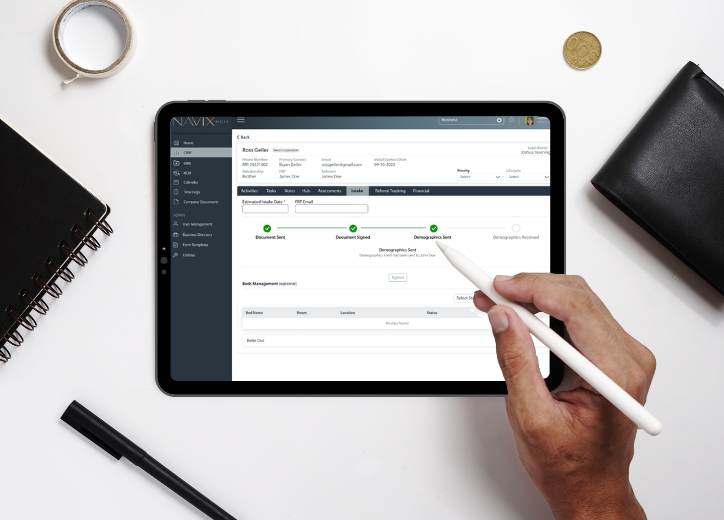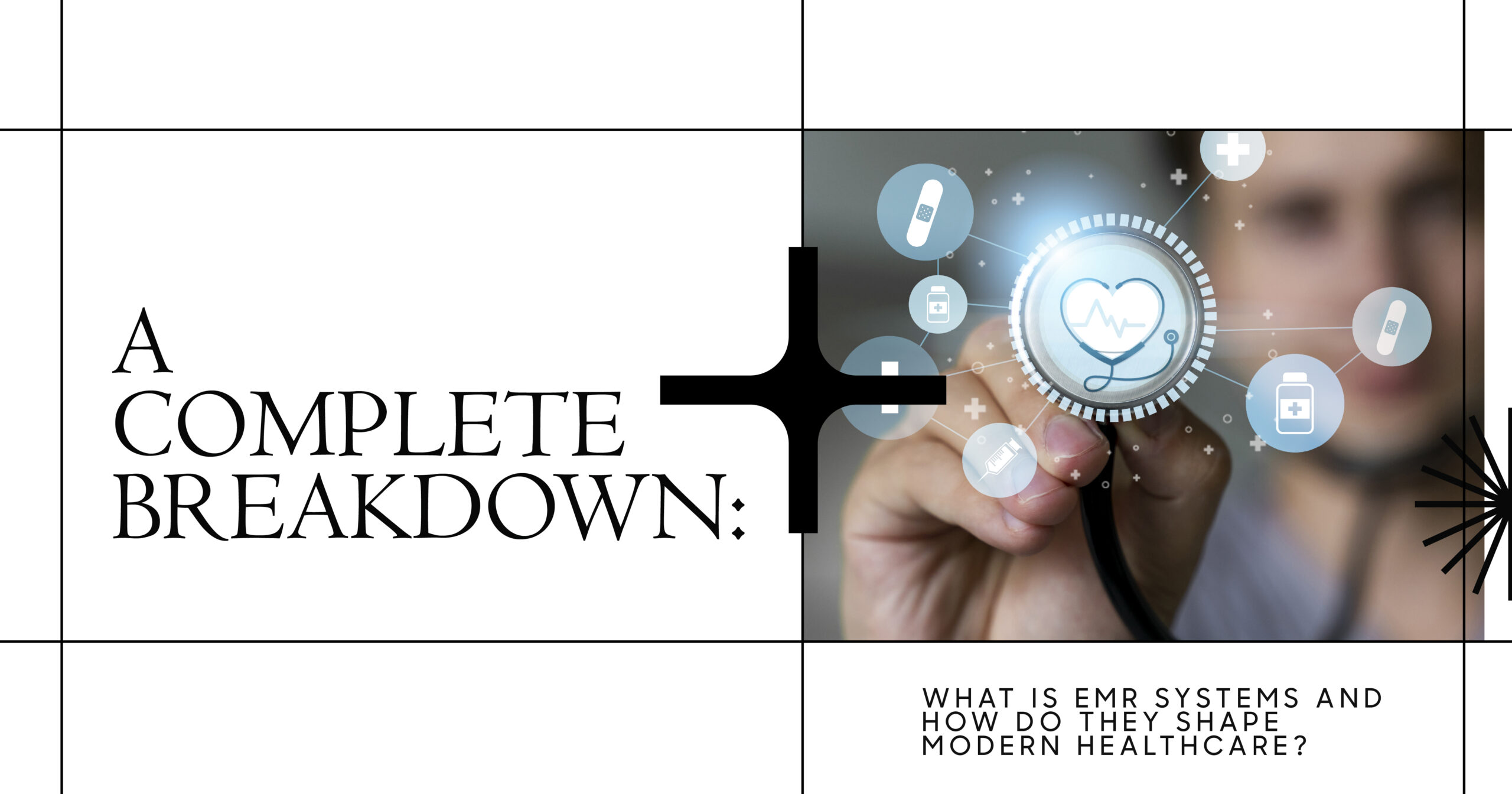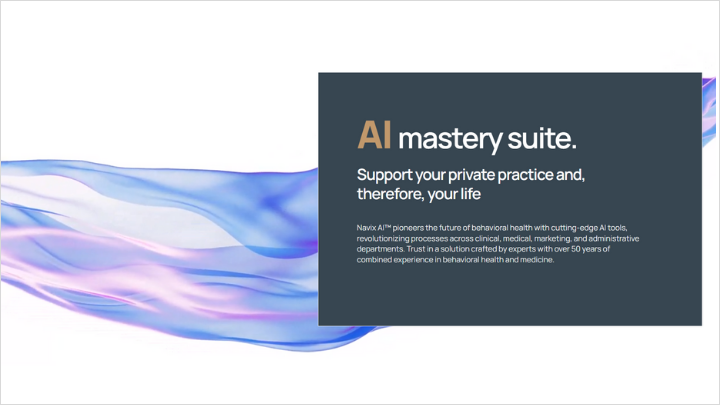Healthcare is one of the top industries that has benefited from recent technological developments, and technological advancements have fueled the expansion of many other businesses. The Electronic Medical Record (EMR), Revenue Management Cycle (RMC), and Customer Relationship Management (CRM) systems are examples of such technological innovation for behavioral healthcare institutions.
Used individually, these software systems bring about an array of benefits to organizations by streamlining, simplifying, and managing work processes easily. However, integrating the three into one system amplifies those benefits manifolds. Understanding the tense environment in behavioral healthcare organizations, Navix Hub offers CRM, RCM, and EMR integrated solutions so you can maximize productivity and patient experience at your end.
Before exploring the benefits of this integration, let’s understand what CRM, RCM, and EMR are.
- EMRs are electronic medical records that contain the usual clinical and medical information from a single provider’s office. A provider’s paper chart’s contents, including medical history, diagnosis, prescriptions, vaccination records, allergies, test findings, and doctor’s comments, are all digitally stored in an electronic medical record (EMR). Providers mostly employ them for diagnosis and treatment.
- CRM software typically aids in the gathering and management of customer contact information as well as the management of relationships with both present and future clients. The creation and maintenance of client connections is the core goal of CRM. It is the instrument that enables you to manage patient relations and guarantee their satisfaction.
- RCM is the method of locating, obtaining and controlling the practice’s income from payers depending on the services rendered. For a healthcare practice to be financially viable and to continue offering its patients high-quality treatment, the RCM process must be effective.
Let’s delve into the benefits of an all-in-one system now!
Increase in revenue.
This is the most prominent and important advantage of an integrated EMR and CRM system. A complete patient lifecycle will be produced by an EMR and CRM system working together. As a result, you can offer the greatest patient care and experience.
With this wonderful experience, your medical facility’s income will rise as you draw in more patients and win their loyalty. Your company will be able to develop targeted marketing efforts to reach new clients and provide a top-notch experience for everyone with the help of the integration of EMR and CRM.
Reduced errors and costs.
With non-integrated systems, the same data must be manually input over and again. This increases the chances for the data to be error-prone, increasing inefficiency. Data transmission from one software system to another can also be expensive when managing different systems, and interface mistakes are more likely to increase costs.
However, single-point data input is made possible by integrating a CRM, EMR, and RCM into one database. For optimal accuracy, data integrity, and efficiency, the information flows smoothly from patient intake to several locations inside the process.
Automated invoice generation.
Based on the information it extracts from the EMR, an integrated system automatically produces charges for each patient. Census data is often given to the billing division in a non-integrated system and manually input into the RCM after that. Billing mistakes, such as omitting billable sessions or days of stay, are avoided via an integrated approach. Charges are automatically calculated for outpatient services depending on attendance.
Quick and simple billing checks.
By guaranteeing that all billable items are accounted for and then actually invoiced, an EMR and RCM linked in one database eliminate missed billing opportunities and partially paid authorizations.
The RCM receives authorization numbers from Utilization Review automatically when an EMR is wholly linked. When claims are filed, system controls make sure that authorizations that do not match admission records are reported.
Time-Saving
A healthcare career is demanding. To give your patient the finest care possible, doctors and other healthcare professionals must pay close attention to them. Updating separate systems and patient information manually wastes a lot of time and work. But when you can easily automate these with the help of combined EMR and CRM systems, your business will develop a seamless procedure for maintaining data and following the progress of patients. The workforce can then concentrate on doing what they do best, which is delivering healthcare services, and you can both save some valuable time.
Ease of Patient Billing.
An integrated system avoids the problems arising from using several software systems regarding patient billing. Different payment methods for insurers and patients make it difficult to see a company’s whole financial picture and are ineffective. These procedures are streamlined, and a fully integrated EMR and RCM remove redundant steps.
Patient account statements are now generated automatically rather than manually from several sources.
Up-to-date information access.
The software and tool integrations provided by our all-in-one system aid in creating information collection by making it easier to gather all patient-related data in one location.
Both the EMR and CRM will immediately update whenever any customer-related information is changed in one of them. For example, the EMR will be updated to maintain track if the CRM tool indicates that the patient has missed an appointment. Similarly, the EMR and CRM will be updated to reflect any medicine doses the patient missed, allowing them to be notified appropriately.
Enhances client experience.
The income of your practice can be impacted in a variety of ways by an integrated EMR and RCM software. But the patients will also gain from this integration since content patients are more likely to stay with a doctor and make recommendations.
If claims processing mistakes are reduced, patients are less likely to become frustrated or confused throughout the billing process. Additionally, with seamless data transfer from your EMR to your billing software, your staff can more precisely confirm reimbursement and predict patient costs. Patient estimates are an excellent way to boost patient loyalty and upfront payments.
Your patient group benefits indirectly from the time savings that result from EMR-RCM connectivity. At the same time, your staff can concentrate more on patient satisfaction when administrative tasks are less time-consuming.




